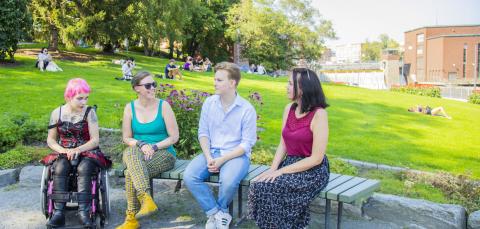Tampere green areas can be sorted into different types based on their purpose of use and natural characteristics:
The central parks are relatively small, high-quality green areas intended primarily for rest and recreation. Their central location means that they are important for the urban landscape, so they require high-quality construction and maintenance. These parks include Koskipuisto Park, Kirjastonpuisto Park and Hämeenpuisto Park.
Local parks are functional parks that are reserved for play, rest and recreation and are connected to nearby housing. Local parks are located in population centres within walking distance of housing areas. The smallest local parks are usually constructed parks, but the larger ones have natural areas.
District parks are activity-focused parks that are intended for residents’ daily use and are more extensive than local parks. These parks usually contain both constructed and natural parts. The constructed areas include various functional green services, such as playgrounds, fields and courts for ball sports and other sports, and recreational routes. The district parks include Isolammenpuisto Park in Kaukajärvi and Atalanpuisto Park in Atala.
Regional parks are large recreational areas that are mostly natural and are located between urban districts. They are the core areas of the local ecological network, and they include areas reserved for outdoor recreation, physical training and sports, including sports fields and courts, local sports facilities and allotments. The regional parks include Pyynikki, Kauppi and the shores of Lake Iidesjärvi.
The routes located in green areas are important green services. Depending on the surrounding terrain and purpose, the routes are either corridors or lightly constructed paths. These various park corridors, outdoor recreation routes, and pedestrian and bicycle routes form a comprehensive network of recreational routes throughout the city.
